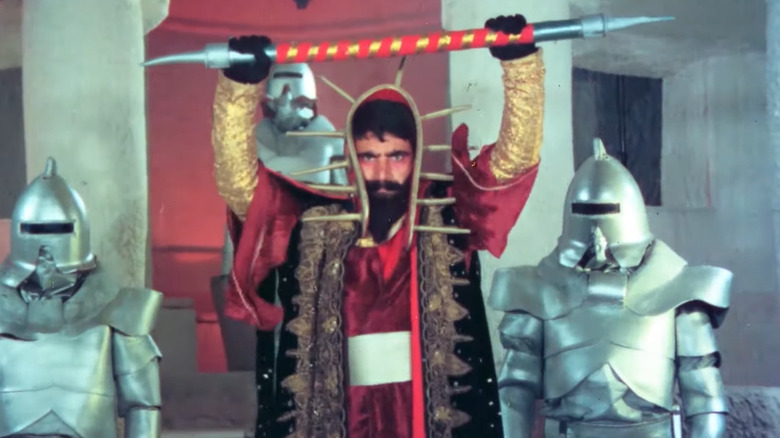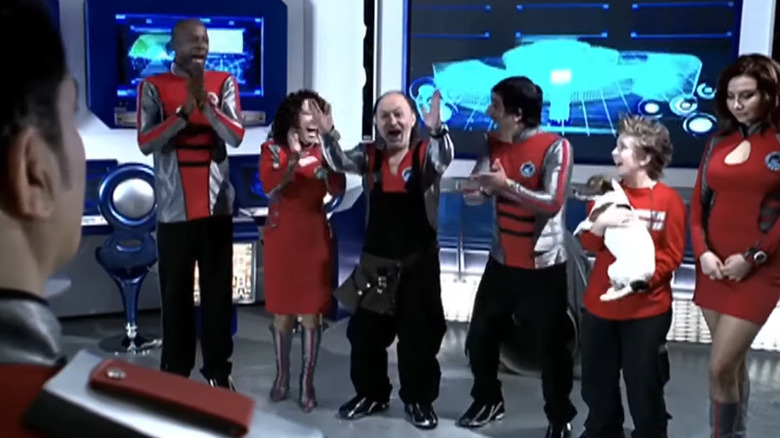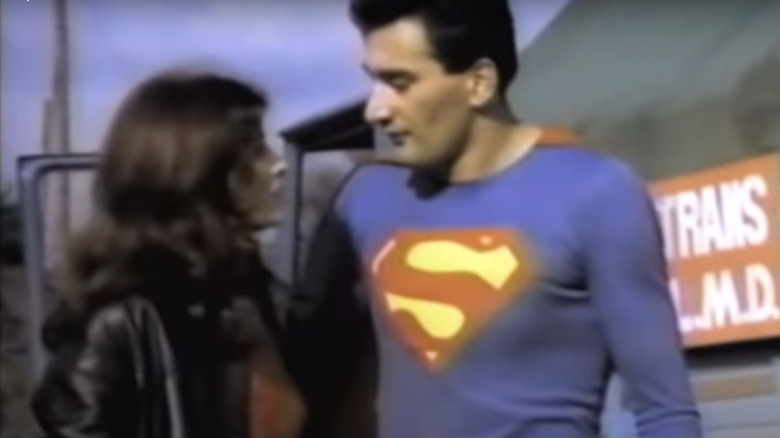What Are 'Turkish Star Wars' & Its Sequel 'Turks In Space' Really About?
With the immense success of "Star Wars" in 1977, it's no surprise that weird, blatant rip-offs popped up all over the world, from the Italian flick "Starcrash" to Japan's "Message from Space." But one country took such extremes to replicate the galaxy far, far away that it managed to earn a legacy all its own.
While initially released in 1982 as "Dünyayı Kurtaran Adam," or "The Man Who Saves the World" in English, this infamous Turkish title is more commonly remembered as "Turkish Star Wars" by most audiences. Its plot, which sees a pair of pilots land on a planet and attempt to take down its Satanic leader, doesn't sound too much like George Lucas' sci-fi epic on the surface. Rather, the movie's infamous moniker stems from its use of special effects footage and music cues from "A New Hope," which director Çetin İnanç obtained by copying assets from a Turkish print of the film. This was done as a last resort, however, as the arrival of a sudden storm destroyed the outdoor spaceship sets intended to be used by the low-budget production. The film also employs music from other notable blockbusters including "Ben-Hur," "Planet of the Apes," "Moonraker," and even the theme from "Raiders of the Lost Ark."
Despite its shoddy production values, "The Man Who Saves the World" became a success in its home country. Its rise as a cult classic began in the 1990s when the film became available on bootleg home media. Since then, its bizarre plot and transparent intellectual property-lifting have led some to deem it one of the worst films of all time, while others celebrate it for its eccentricities. "Turkish Star Wars" became a movie that audiences couldn't forget, but the same can't be said about its follow-up.
Turks in Space pails in comparison to a concept by the original film's director
"Turkish Star Wars" may have a different legacy compared to its American namesake, but similar to the Lucasfilm production, the film went on to spawn a sequel of its own. "The Son of the Man who Saved the World," commonly referred to as "Turks in Space," saw the light of day in 2006. This time around, the film sees the son of Murat from the original work alongside his newfound brother to save their society from an oppressive ruling system.
Other than seeing "Turkish Star Wars" lead Cüneyt Arkın return for a cameo appearance as Murat, "Turks in Space" does little to honor the legacy of its fan-favorite predecessor. Instead, the film unsuccessfully goes down a more comedy-centric route, with many comparing its effortsto the 2004 Turkish sci-fi comedy "G.O.R.A." Its 1.5 rating on IMDb speaks to its abysmal legacy, having been largely forgotten by audiences.
What makes it worse is that we almost had a worthy follow-up from the mind of original "Turkish Star Wars" director Çetin İnanc. According to the filmmaker, the sequel centered on a grand conflict that, " ... plays God against the devil in an epic war for Earth." This epic continuation, conceptualized in 2009, would have involved the alien abduction of world leaders, the creation of zombie ninja space warriors, and a planet on the other side of a black hole. Unlike "Turks in Space," this follow-up sounds like it would have respected the original while staying in line with its rich entertainment value, which is all fans need to stay happy.
The Turksploitation rabbit hole goes pretty deep
If "Turks in Space" failed to deliver the campy energy of the original "Turkish Star Wars," there are a slew of other options that can scratch your itch. Turkey has earned a reputation among moviegoers for its line of unauthorized remakes and ripoffs, birthing the fan-named subgenre of Turksploitation. While an excuse can be made that "The Man Who Saved the World" only stole scenes from "Star Wars" as a last-ditch option, the same defense cannot be applied to the majority of other titles under the Turksploitation label.
Long before Captain America and Spider-Man met face-to-face in "Captain America: Civil War," the two duked it out in 1973's "3 Dev Adam," a movie where Cap and Mexican wrestler Santo go up against a Spider-Man who leads a nefarious crime syndicate. Following in its spirit, the '70s continued the trend of poorly made Turkish ripoffs. From 1974's "Seytan" taking blatant cues from the previous year's "The Exorcist" to 1979's "Süpermen Dönüyor" following in the footsteps of Christopher Reeve's iconic take on the DC hero from 1978, no blockbuster was safe from the wrath of Turkey's film industry.
The trend continued in the 1980s, with everything from "Kara Simsek" giving the "Rocky" franchise a punch in the gut to "Çöl" taking a bite out of "Jaws." The historic success of "E.T. the Extra-Terrestrial" spawned two Turkish knockoffs with 1984's "Badi" and 1987's "Homoti, both with equal amounts of nightmare fuel. Even with the obvious cash-grabby nature of these flicks, however, Turksploitation movies are like nothing else out there.


